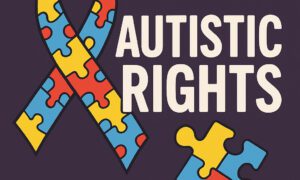Sarah and Tom had been married for fifteen years when they realized their relationship had run its course. Like many Montana couples, they faced the daunting prospect of divorce—but unlike the bitter courtroom battles often portrayed in movies, they chose a different path. Through collaborative divorce, they worked together with trained professionals to dissolve their marriage while preserving their dignity, protecting their children’s emotional wellbeing, and maintaining a foundation for co-parenting. Their story isn’t unique; across Montana, more families are discovering that divorce doesn’t have to be a war.
What Makes Collaborative Divorce Different?
Collaborative divorce Montana represents a fundamental shift from traditional divorce proceedings. Instead of adversarial litigation where spouses square off against each other in court, this approach brings both parties together with their respective attorneys and other professionals to work toward mutually beneficial solutions.
The process centers on open communication, shared problem-solving, and respect for each family member’s needs. Unlike mediation, where a neutral third party facilitates discussions, collaborative divorce involves each spouse having their own attorney trained specifically in collaborative family law. This ensures both parties receive independent legal advice while maintaining a cooperative atmosphere.
What sets this approach apart is the commitment all participants make at the outset: if the collaborative process breaks down and the case goes to court, both attorneys must withdraw. This built-in safeguard ensures everyone remains invested in finding solutions outside the courtroom.
The Montana Advantage: Why Collaborative Divorce Works Here
Montana’s close-knit communities and family-centered values make collaborative divorce Montana particularly well-suited to the state’s culture. In smaller towns where former spouses are likely to encounter each other at school events, community gatherings, or local businesses, maintaining respectful relationships becomes even more important.
The collaborative process also aligns with Montana’s practical, problem-solving mentality. Rather than letting judges make crucial decisions about family matters, Montana families can retain control over outcomes that affect their daily lives. This is especially valuable when dealing with child custody arrangements that need to account for Montana’s unique geography, seasonal employment patterns, or family ranching operations.
How the Collaborative Process Unfolds
The collaborative divorce process typically begins with both spouses and their attorneys signing a participation agreement. This document outlines everyone’s commitment to respectful communication, full financial disclosure, and creative problem-solving.
Teams may include additional professionals depending on the family’s needs. Child specialists help navigate custody arrangements with children’s best interests at heart. Financial professionals assist with complex asset division or business valuations. Mental health professionals support the family’s emotional wellbeing throughout the transition.
Meetings occur regularly, with all parties present to discuss issues ranging from property division to parenting schedules. The pace moves according to the family’s needs rather than court calendars, allowing time for thoughtful consideration of important decisions.
Benefits That Matter to Montana Families
Privacy and Confidentiality
Court proceedings become public record, but collaborative divorce discussions remain private. For Montana families who value discretion, this confidentiality protects both personal details and business interests from public scrutiny.
Cost Effectiveness
While collaborative divorce involves professional fees, it typically costs significantly less than contested litigation. Families avoid expensive court battles that can drag on for months or years, instead investing in solutions that work for their specific situation.
Children’s Wellbeing
Research consistently shows that children fare better when parents can co-parent respectfully after divorce. The collaborative process prioritizes children’s emotional wellbeing by modeling cooperation and reducing conflict. Child custody arrangements developed collaboratively often prove more sustainable because both parents contributed to creating them.
Faster Resolution
Montana’s court systems, like those nationwide, face significant backlogs. Collaborative divorce allows families to move forward on their timeline rather than waiting months for court dates. This faster resolution helps everyone begin rebuilding their lives sooner.
When Collaborative Divorce May Not Be Right
Collaborative divorce works best when both spouses can communicate respectfully and commit to honest disclosure. It may not be appropriate in situations involving domestic violence, substance abuse, or severe mental health issues that impair judgment. Cases with extreme power imbalances or where one spouse refuses to participate in good faith may require traditional litigation or other dispute resolution methods.
Choosing the Right Professionals
Success in collaborative divorce Montana depends heavily on working with experienced professionals. Look for attorneys certified in collaborative family law who understand Montana’s specific legal landscape. Many have completed extensive training beyond law school to develop the specialized skills this process requires.
The collaborative team should include professionals familiar with Montana’s unique aspects—from understanding military benefits for families stationed at Malmstrom Air Force Base to navigating agricultural asset division for farming and ranching families.
Settlement Agreements That Last
One significant advantage of collaborative divorce is the durability of settlement agreements reached through this process. Because both parties actively participate in crafting solutions, they’re more likely to honor the terms long-term. This reduces the likelihood of future court battles and modifications, providing stability for families as they adjust to their new circumstances.
Taking the First Step
If you’re considering divorce in Montana, research your options before making decisions that will affect your family for years to come. Collaborative divorce offers a path that prioritizes dignity, respect, and practical solutions over winning and losing.
Start by learning about Montana’s family law landscape and connecting with professionals trained in collaborative practice. Many attorneys offer initial consultations to help you understand whether this approach fits your situation.
Remember that choosing collaborative divorce doesn’t mean avoiding difficult conversations or compromising your interests. Instead, it means approaching these challenges with support, structure, and a commitment to finding solutions that work for your unique family circumstances.
The path through divorce is never easy, but it doesn’t have to be destructive. For Montana families ready to prioritize cooperation over conflict, collaborative divorce offers hope for a better way forward—one that honors the past while building a foundation for the future.





























